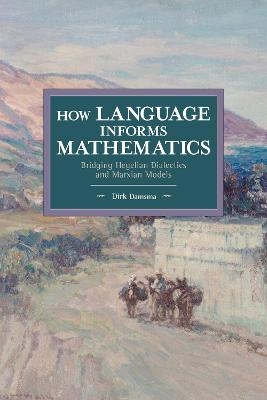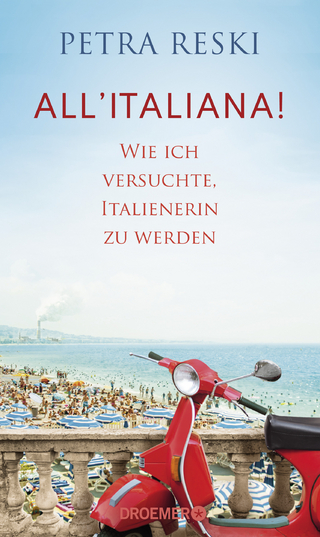
How Language Informs Mathematics
Haymarket Books (Verlag)
978-1-64259-186-6 (ISBN)
In How Language Informs Mathematics Dirk Damsma shows how Hegel's and Marx's systematic dialectical analysis of mathematical and economic language helps us understand the structure and nature of mathematical and capitalist systems. More importantly, Damsma shows how knowledge of the latter can inform model assumptions and help improve models.
His book provides a blueprint for an approach to economic model building that does away with arbitrarily chosen assumptions and is sensitive to the institutional structures of capitalism. In light of the failure of mainstream economics to understand systemic failures like the financial crisis and given the arbitrary character of most assumptions in mainstream models, such an approach is desperately needed.
Dirk Damsma, Ph.D. (2015), University of Amsterdam, is Lecturer of Economic Methodology and Thesis Coordinator at that university. He has published "Set Theory and Geometry in Hegel" in Hegel Jahrbuch 2011. This book is an improved rendition of his dissertation.
List of Figure and Tables
Acknowledgements
Brief Contents
Note on the Style of Referencing and the Use of Capitalisation and Emphasis in this Work
List of Symbols
Introduction
1 On Marx’s and Hegel’s Dialectical Methods
Introduction
1 The Chronology of Hegel’s and Marx’s Historical and Systematic Dialectic
2 Hegel’s Method
3 Marx’s Comments on Hegel, Their Implications and Marx’s Twist on Hegel’s Dialectical Method
4 Commentators on and Studies of Marx’s Dialectics
Summary and Conclusions
Preview
2 The Dialectical Foundations of Mathematics
Introduction
1 Previous Literature on Hegel and Mathematics
2 Hegel’s Determination of the Quantitative
A Quality
2.1 Being
2.2 Nothing
2.3 Becoming
2.4 Presence
2.5 Something and Other
2.6 One and Many Ones
2.7 Attraction and Repulsion
B Quantity
2.8 Quantity
2.9 Continuous and Discrete Magnitude
2.10 Quantum and Number
2.11 Unit and Amount
2.12 Limit
2.13 Intensive and Extensive Magnitude
C Measure
2.14 Measure
3 Hegel’s Determination of Mathematical Mechanics
A Space and Time
3.1 Space
3.2 Spatial Dimensions
3.3 The Point
3.4 The Line
3.5 The Plane
3.6 Distinct Space
3.7 Time
3.8 Temporal Dimensions
3.9 Now
3.10 Place
3.11 Motion
3.12 Matter
Summary and Conclusions: How This Dialectic Reflects on Mathematics
Appendix: Comparison of the Determination of the Quantitative in the Wissenschaft and the Encyclopädie
A1 Being, Nothing, Becoming, Presence, Something and Others
A2 Qualitative Limit
A3 Finitude and Infinity
A4 True Infinite
A5 Being-for-self
A6 One, Many Ones, Repulsion, Attraction, Quantity, Continuous and Discrete Magnitude, Quantum, Number, Unit and Amount, Quantitative Limit and Intensive and Extensive Magnitude
A7 Quantitative Infinity
A8 Direct Ratio
A9 Inverse Ratio
A10 Ratio of Powers
A11 Measure
Concluding Remarks
3 Marx’s Systematic Dialectics and Mathematics
Introduction
1 Marx’s Acquaintance with and Ideas on Mathematics
2 Marx’s Exhibition of Capitalism as a System: The Systematic-Dialectical Position
2.1 Sociation
2.2 Dissociation
2.3 Association: The Exchange Relation
2.4 The Commodity, Exchangeability and the Bargain
2.5 Value in Exchange
2.6 The Simple, Expanded and General Commodity Form and the Money Form of Value
2.7 Money as Measure of Value, Means of Circulation and End of Exchange
2.8 Capital
2.9 Constant and Variable Capital
2.10 Accumulation
2.11 The Money Capital, Production Capital and Commodity Capital Circuits
2.12 Fixed and Circulating Capital
2.13 Simple Reproduction, Means of Production, Consumption Goods, Total Social Capital and Expanded Reproduction
2.14 General Rate of Profit, Many Capitals, Competition and Minimum Prices of Production
3 The Role of Mathematics in Marx’s Investigation and Exhibition in Capital: the Case of Marx’s ‘Schemes of Reproduction’
3.1 Simple Reproduction
3.1.1 The Model
3.1.2 Conclusions
3.2 Expanded Reproduction
3.2.1 The Model
3.2.2 Conclusions
Summary and Conclusions on the Role of Mathematics in Systematic-Dialectical Investigation and Exhibition
4 A Formal Dynamic Reconstruction of Marx’s Schemes of Reproduction along Dialectical Lines
Introduction
1 The Model for Simple Reproduction
2 Extensive Growth of Total Social Capital
3 The Model for Expanded Reproduction
Summary and Conclusions
Appendix: Derivations
A1 Accumulation and Growth Rate for Department c as a Function of Accumulation and Growth in Department p with Extensive Growth (expression 4.15 and 4.16)
A2 Constant Capital’s Growth Rate for Department c for the Case of Expanded Reproduction (expression 4.19)
A3 The Condition for Constant Rates of Accumulation in Case of Expanded Reproduction (expression 4.20)
Summary and General Conclusions
References
Author Index
Subject Index
| Erscheinungsdatum | 27.05.2021 |
|---|---|
| Reihe/Serie | Historical Materialism |
| Zusatzinfo | Illustrations |
| Verlagsort | Chicago |
| Sprache | englisch |
| Maße | 152 x 228 mm |
| Themenwelt | Sozialwissenschaften ► Politik / Verwaltung ► Politische Systeme |
| Sozialwissenschaften ► Politik / Verwaltung ► Politische Theorie | |
| Wirtschaft ► Allgemeines / Lexika | |
| Wirtschaft ► Volkswirtschaftslehre ► Mikroökonomie | |
| ISBN-10 | 1-64259-186-6 / 1642591866 |
| ISBN-13 | 978-1-64259-186-6 / 9781642591866 |
| Zustand | Neuware |
| Informationen gemäß Produktsicherheitsverordnung (GPSR) | |
| Haben Sie eine Frage zum Produkt? |
aus dem Bereich


